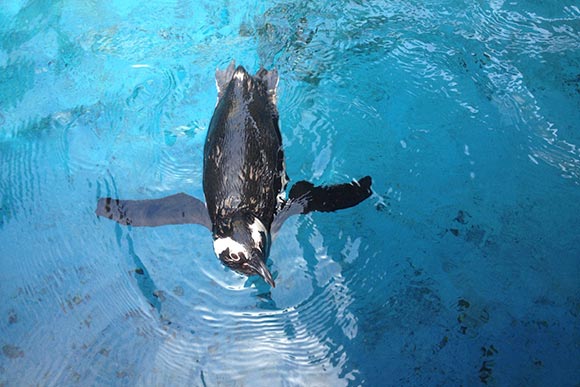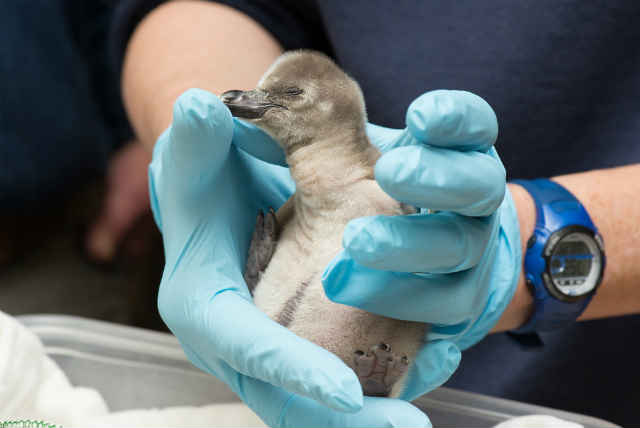Gentoo penguins congregate on the shore of Danco
Island, Antarctic Peninsula, in December 2014. In the foreground are the
remains of Antarctic krill, a crustacean that is a vital food source
for penguins and other wildlife on the frozen continent.
ANTARCTIC AND SOUTHERN OCEAN COALITIONBEIJING — Scientists studying
the Antarctic’s marine life received some unexpected news this month:
China plans to vastly increase fishing for Antarctic krill – small
crustaceans that are a critical food for the continent’s penguins and
other creatures.
China currently harvests about 32,000 metric tons
of krill annually from Antarctica’s waters, topped by only Norway and
South Korea. Under China’s plans,
detailed in a March 4 story in the state-run China Daily, the world’s most populous country would increase those catches 30 to 60 times, harvesting up to 2 million metric tons yearly.
Rodolfo
Werner, a marine scientist and adviser to Antarctic conservation
groups, said he doubts China can ramp up its catches to that level. But
the fact that China has announced such ambitious plans worries him,
partly because other countries might follow suit.
“I’m concerned –
very concerned,” said Werner in a telephone interview from his home in
San Carlos de Bariloche, Argentina. “If they invest big money in their
fishing fleets, it will push the system to relax the current (Antarctic)
catch limits.”
Beijing’s fishing plans are part of its larger
strategic interests in the frozen continent. Over the last three
decades, China has built four research stations in Antarctica and is
preparing to build a fifth. While an international treaty protects
Antarctica from militarization and mining, the Chinese research stations
have fueled speculation that China has long-term plans to exploit the
continent’s vast energy and mineral resources.
A krill floats in a tank in
2005 at the Australian Antarctic Division, in Hobart, Australia.
Antarctic krill are thought to be the most abundant animal species on
Earth, and are a crucial food source for penguins and other marine
mammals.
AUSTRALIAN ANTARCTIC DIVISION
With a population
of nearly 1.4 billion, China is highly concerned about food security,
and, like other countries, it harvests krill for a variety of products.
These include livestock and aquaculture feed, fish bait and omega-3
dietary supplements. Norway is the world’s largest harvester of
Antarctic krill, largely to supply the supplements industry with omega-3
fatty acids.
Worldwide, huge swarms of krill help feed whales,
penguins and other marine animals. Antarctic krill are small creatures –
about 2 1/2 inches long – but incredibly abundant. Scientists believe
that the total weight of Antarctic krill is greater than the cumulative
weight of any other animal species.
Despite that abundance, many
conservationists are concerned that the Antarctic’s food chain is
already being harmed by industrial krill fishing. Populations of Adélie
and chinstrap penguins have declined more than 50 percent in the West
Antarctic Peninsula in the last 30 years, and at least one study has
linked the decline to a reduction in krill.
Complicating the debate is global climate change. According to
the Pew Charitable Trusts,
which operates a program to protect penguins, temperatures around the
Antarctic Peninsula – the area closest to South America’s southern tip –
are rising faster than anywhere on Earth. The decline of ice sheets may
be reducing krill abundance, since krill get much of their winter food
from the algae that grows under the ice.
“The area is changing.
Something is happening,” said Werner, who serves as senior adviser to
the Antarctic and Southern Ocean Coalition, a group of conservation
organizations. “That’s why, whatever we do with krill fishing, we need
to be very careful.”
China’s fishing plans were announced in
Beijing by Liu Shenli, chairman of a state-owned Chinese industry, the
National Agricultural Development Group. The group has been described as
China’s largest agricultural development enterprise. So far it has
processed 20,000 metric tons of krill products, according to official
figures.
McClatchy was unsuccessful in getting comment from Liu,
but in the March 4 China Daily story, he said the National Agricultural
Development Group was investing heavily in krill fishing and processing,
with his largest fishing boat costing more than $100 million.
“Krill
provides very good quality protein that can be processed into food and
medicine,” China Daily quoted Liu as saying. “The Antarctic is a
treasure house for all human beings, and China should go there and
share.”
For China to ramp up its krill harvests, it would have to
get approval from the Commission for the Conservation of Antarctic
Marine Living Resources. The commission was formed in 1982 following two
decades of unregulated krill fishing in the Antarctic, mainly by the
former Soviet Union. The commission remains controversial, partly
because its voting membership is made up of countries with a financial
interest in commercializing krill.
Conservationists have been
pushing the commission to require more observers on krill fishing
vessels and to restrict fishing near penguin foraging areas, such as the
Antarctic Peninsula. But China and some other countries with krill
fleets have balked at such proposals, Werner said.
Andrea
Kavanagh, director of the global penguin conservation campaign for the
Pew Charitable Trusts, said the commission too often acts as a fisheries
management agency, instead of one under a mandate to conserve marine
life. The commission, she said, has yet to confront and address the
causes of declining penguin populations in the Antarctic Peninsula.
“Scientists
are the first to say they have no idea what is causing the decline of
these penguin species,” she said in an email exchange. “So a question
that needs to be asked is . . . why does CCAMLR still allow the fishery
to operate so close to the peninsula?”
Krill fishing fleets range
from traditional trawlers to more modern vessels that literally vacuum
krill from the ocean and process the catch on board. China currently has
eight boats in use; it would have to greatly increase its fleet to
increase its catches to 2 million metric tons yearly.
That’s about seven times the Antarctic krill currently harvested by all nations annually.
China
krill hunts do not come without risks. In 2013, a Chinese krill fishing
vessel – the “Kai Xin” – caught fire and sank off the coast of
Antarctica. A Norwegian vessel in the area rescued its crew of 97.
source 











 A recently hatched Humboldt penguin gets a checkup at the Oregon Zoo. (Source: Michael Durham/Oregon Zoo)
A recently hatched Humboldt penguin gets a checkup at the Oregon Zoo. (Source: Michael Durham/Oregon Zoo)























